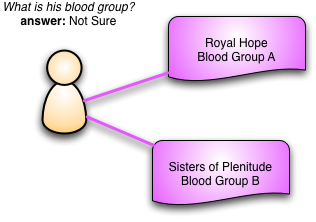tagged by: analysis patterns
Range
Treating a range of values, such as Oct 22-25 as a single object.
Quantity
Handling dimensioned numbers such as: 12 ft and $9.99
Specification
Patterns that describe how you can describe specifications of kinds of objects. Essentially the most general form allows you to encode predicate expressions as an interpreter of objects. These are useful for representing object queries, and for defining a requirement that objects need to match.
Dealing With Roles
A range of patterns that look at ways to handle situations where objects of a class can play different roles in various situations.
Recurring Event in Calendars
How to build an object structure that allows you to represent complicated recurring events. Such as the schedule for street cleaning when I lived in the South End of Boston.
UML Diagrams for Analysis Patterns
I'd intended to put together UML diagrams for the patterns in the book. As it turned out I've come the view that other things were more important. Some others did work on diagrams, however, so here there are some for chapters 2-5
Organization Structures (Accountability)
This is a rework of the accountability chapter from the original analysis patterns book. It does some small updates to the patterns, but the main change is a complete rewrite of the chapter to put it into the new form that I'm now working with.
Dealing with Properties
Many things have properties, and there are many ways to model how these properties work. These range from simple explicit properties to complex property models with an active knowledge level for validation. These patterns discuss some of the options in handling this.
Temporal Patterns
Summarizes various patterns that you can use to answer questions about the state of an information in the past. These include questions of the form "what was Martin's address on 1 Jul 1999" and "what did we think Martin's address was on 1 Jul 1999 when we sent him a bill on 12 Aug 1999".
Patterns for Accounting
Narrative of patterns useful for accounting. Contains basic representations of accounts, entries and transactions, together with an overview of patterns for making accounting adjustments.
Contradictory Observations

Many computer systems are built to house data and turn it into useful information for humans. When we do this there is a natural desire to make that information consistent. After all what use is there of a computer system that's in two minds about things?
